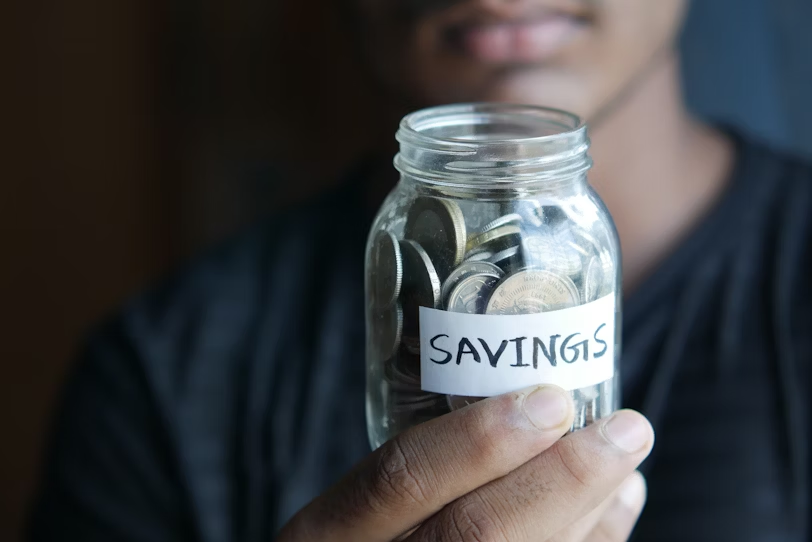If I Could Talk to My 20‑Year‑Old Self…
If I could go back, I’d tell my younger self these five simple budgeting tricks. They would have saved me thousands of dollars and more than a few financial headaches.
Whether you’re fresh out of college, just starting your first job, or fixing past mistakes, these budgeting hacks will help you take control of your money—without feeling broke or deprived.
Budgeting isn’t about saying “no” to everything. It’s about saying “yes” to the things that actually matter.
The Budgeting Myth Most People Fall For
When I first tried budgeting, I made the classic mistake: I thought it meant restricting every single dollar.
Here’s the truth: budgeting isn’t punishment—it’s awareness.
- Step 1: Track everything for 30 days.
- Step 2: Categorize your spending into needs, wants, and savings.
- Step 3: Identify leaks like unused subscriptions or daily impulse purchases.
Why it matters:
You can’t fix what you can’t see. When I saw how much I spent on random Amazon orders and takeout coffee, it was a wake‑up call.
External Resource: Consumer.gov – Track Your Spending Guide
Internal Links:
- Start with The Psychology of Money to understand why we overspend
- Fix past mistakes with How to Set Financial Goals You’ll Actually Stick To
Automate Your Money (AKA Lazy Budgeting)
The easiest way to stick to a budget? Remove will power from the equation.
Here’s how I do it:
- Direct deposit splits: Send a portion straight to savings.
- Automatic bill pay: Avoid late fees and mental clutter.
- Separate spending account: Whatever is left is guilt‑free spending money.
Pro Tip: Automate the moment you get paid. You’ll never miss money you don’t see.
External Resource: NerdWallet – How to Automate Your Savings
Helpful Reads:
- Build momentum with Your First $1,000 Investment
- See how I saved $10K in one year on a $40K salary using automation
Why “Fun Money” Is Non‑Negotiable
The budget I actually stuck to was the one that let me enjoy my life.
I created a guilt‑free spending category just for:
- Concerts
- Weekend trips
- Takeout sushi or pizza
- Random “treat yourself” buys
Ironically, having fun money made me more responsible everywhere else. Without it, I’d binge‑spend after weeks of deprivation.
Pro Tip: Label this account “Lifestyle” instead of “Fun” to mentally own it as part of your plan.
Helpful Reads:
- Balance fun and discipline with From Paycheck to Prosperity
- Learn to spot financial red flags in your 20s
The 50/30/20 Rule—With a Real‑Life Twist
The 50/30/20 rule is a classic formula:
- 50% Needs: rent, bills, groceries
- 30% Wants: lifestyle and entertainment
- 20% Savings/Debt Repayment
But here’s what I learned: Real life isn’t that neat.
In my 20s, student loans and rising rent pushed my budget to 60/20/20. Adjusting the rule to reality made my budget sustainable—and kept me from quitting after a few months.
External Resource: Investopedia – 50/30/20 Rule Explained
Budgeting Apps That Changed My Habits
Technology made budgeting 10× easier. Here are the apps that helped me through each stage:
- Mint – Basic tracking and spending insights
- Rocket Money – Finds and cancels forgotten subscriptions
- You Need a Budget (YNAB) – Advanced budgeting for serious goal‑setters
Pro Tip: Start with free apps to build the habit, then upgrade if you need more features.
External Resource: Forbes – Best Budgeting Apps
Helpful Reads:
- Learn to recession‑proof your finances while tracking every dollar
- Explore the truth about passive income once your budget frees up cash
Conclusion: Budgeting Isn’t About Restriction—It’s About Freedom
If you take just one thing from this article, it’s this:
A budget isn’t about saying no—it’s about saying yes to your future.
These five hacks—tracking your spending, automating your finances, allowing fun money, adjusting the 50/30/20 rule, and using the right apps—will save you time, money, and stress.
Your 20s are the perfect time to build habits that set the stage for financial freedom in your 30s and 40s.
Your Next Steps
- Eliminate Debt and Build Wealth
- Start Investing Without Feeling Overwhelmed
- Retire 10 Years Early with a Smarter Plan

Michael J. Carter
Michael J. Carter helps readers master personal finance, practical investing, and long-term wealth building. At The Golden Safe, he turns complex money topics—like debt payoff, dividend ETFs, cash-flow systems, and money management—into clear, step-by-step guides and tools that make financial education actionable today.

